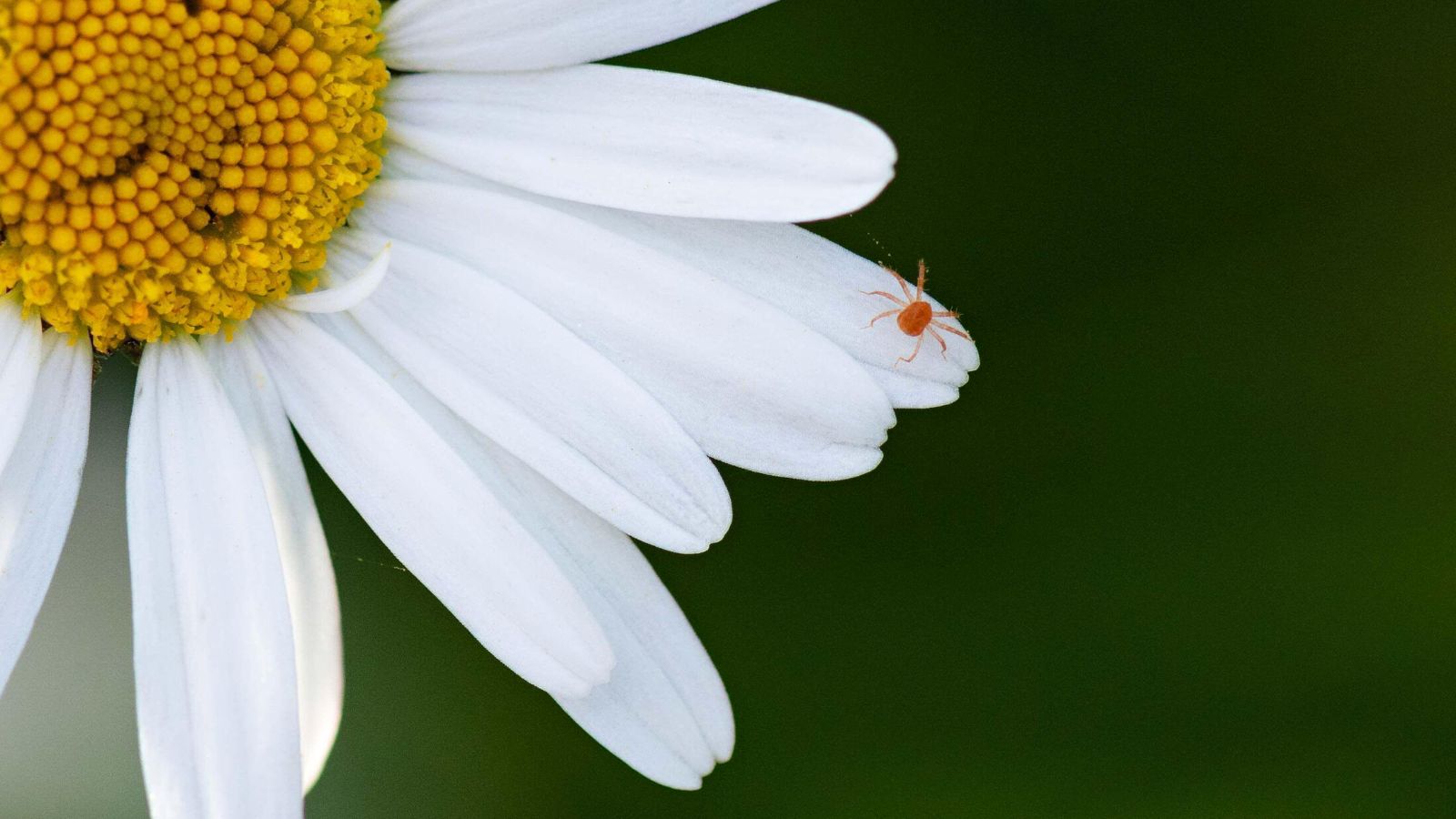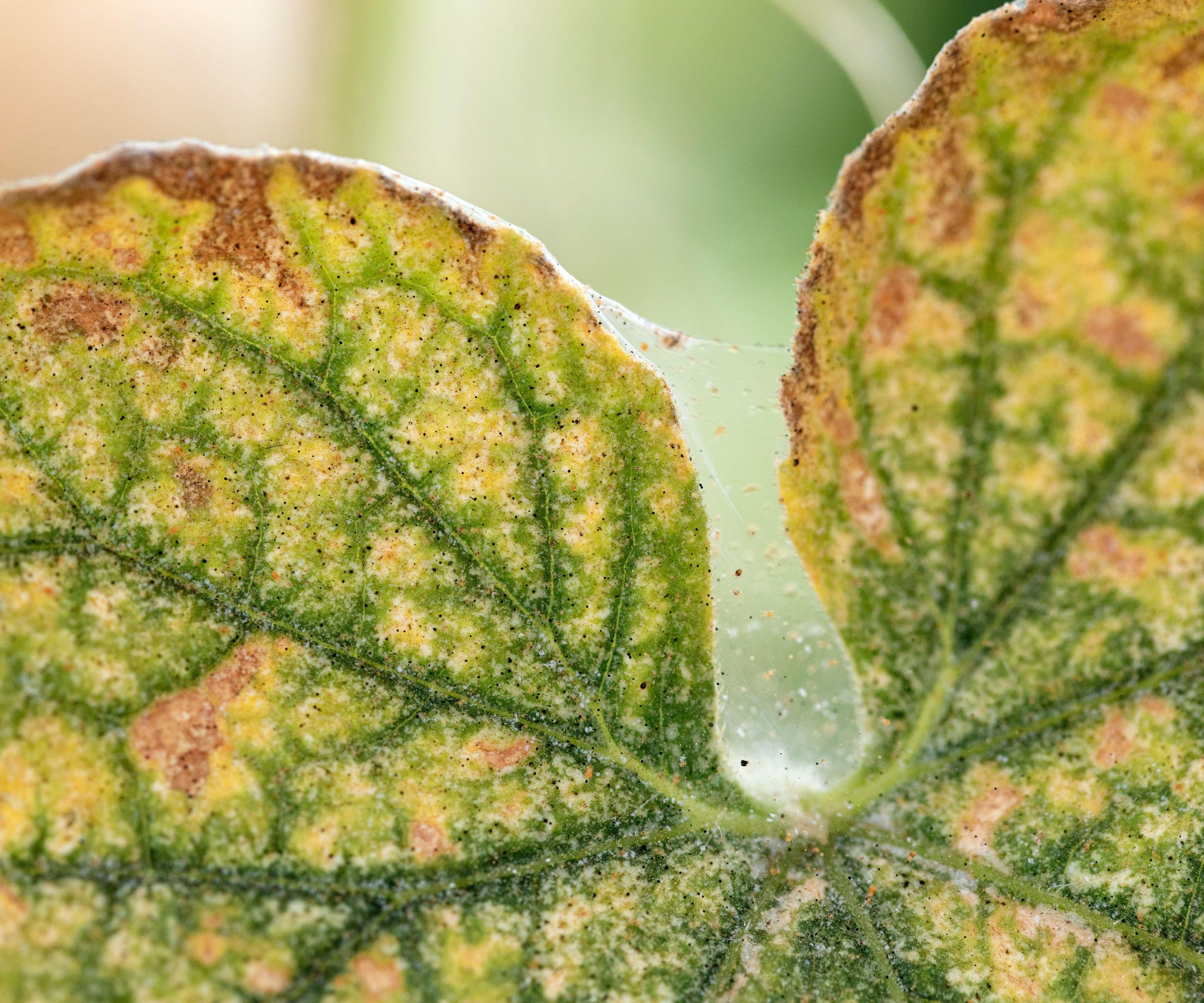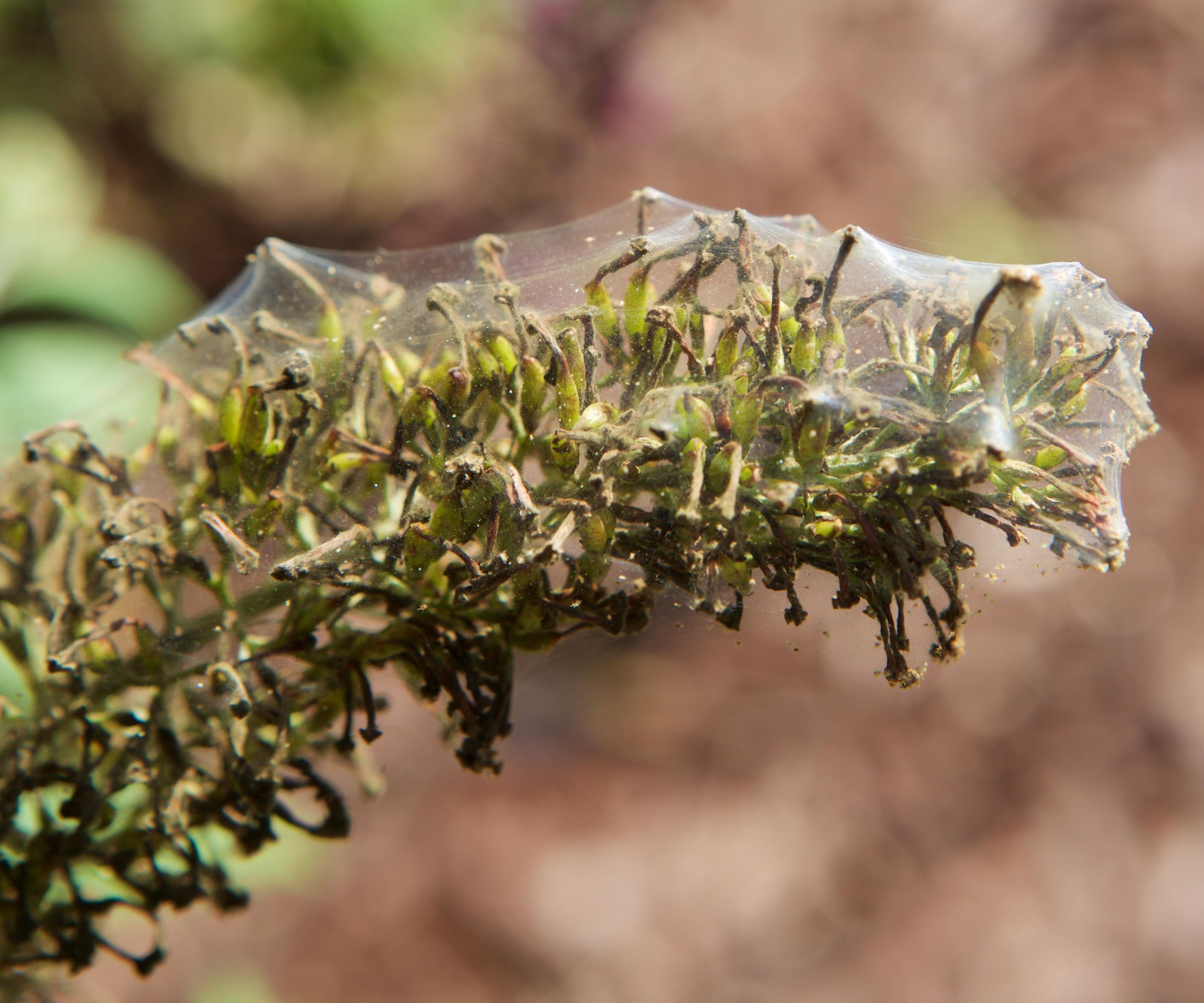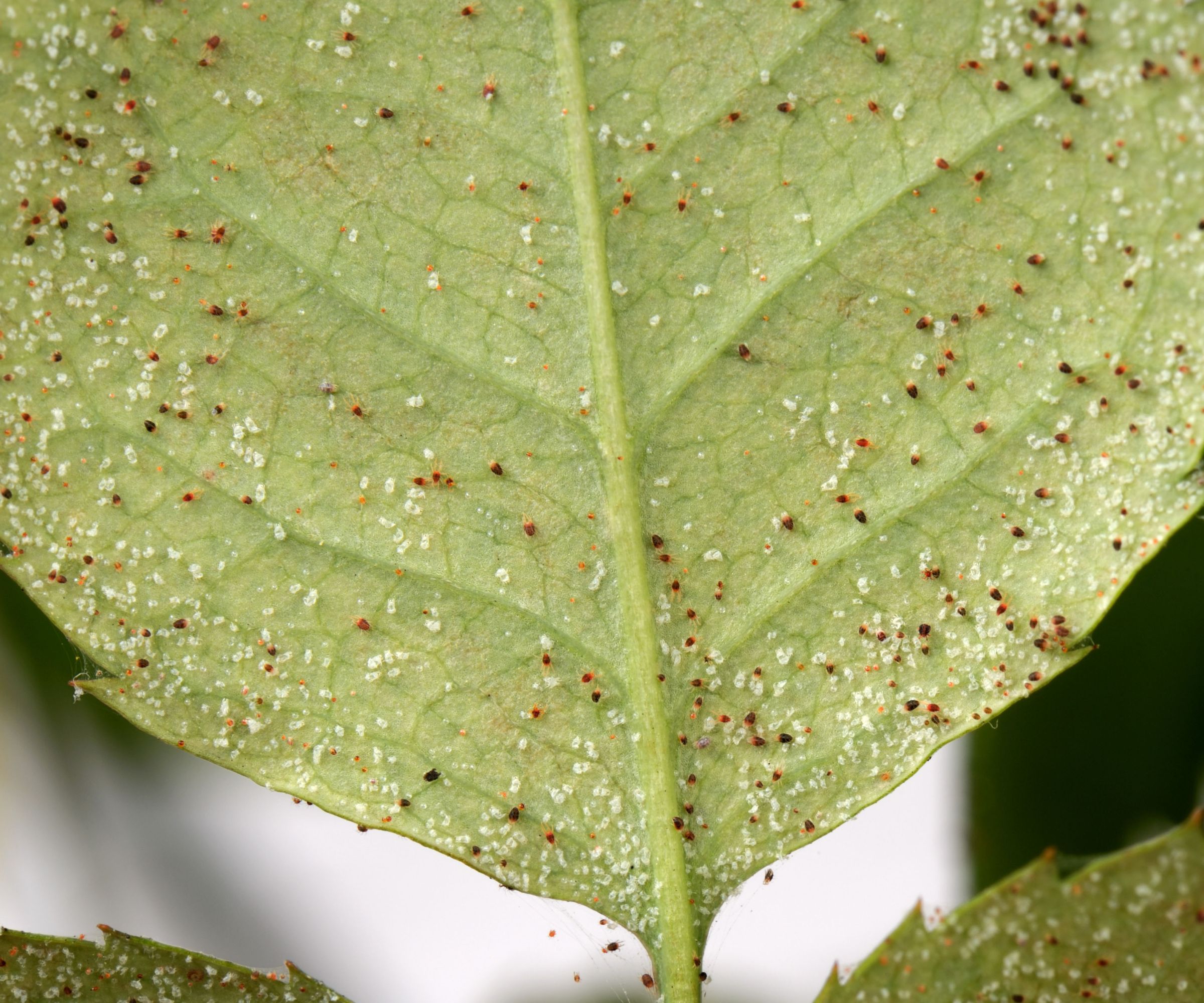How to get rid of spider mites – to protect your plants from pesky pests
Get rid of these pesky insects with these expert tips for protecting your plants


Spider mites are sap-feeding mites that can destroy both your indoor and outdoor plants, leaving mottled leaves and leaf loss on a wide range of foliage. So, how do you get rid of spider mites? And how can you prevent infestations in the future?
If you are after tried-and-tested failsafe ways to keep spiders away, then you might also want to know how to get rid of spider mites, too. As the weather warms up they are quickly becoming common houseplant pests too. Learning how to get rid of spider mites on houseplants and outdoors can make the difference between a thriving plant collection and fodder for your compost bin.
We have spoken to an expert to learn how to get rid of spider mites, how to spot a spider mite infestation, and how to prevent these pesky insects from destroying your plants.
How to get rid of spider mites

While you can use chemical-based pesticides on your plants, there are several natural options available to kill these pests. You can also make your own homemade bug sprays to protect your plants and prevent a range of infestations.
‘On our flower farm, we use biologicals – nature’s own predators – which move quicker than spider mites and can eliminate them before they cause much damage,’ explains Rosebie Morton, founder of The Real Flower Company. ‘In gardens, prune any infested part of the plants – even the entire plant itself if needed – to clear up an infestation.'
To create a spray to get rid of spider mites, mix three tablespoons of dish soap with one gallon of water and spray liberally across the infected plants weekly until the infestation is cleared. Alternatively, soak cotton balls in household rubbing alcohol and wipe the foliage. This method works best on your best indoor plants. Allow the alcohol to sit on the leaves for an hour or so before rinsing the leaves thoroughly with water and drying.
‘Organic insecticides aside, encouraging or buying and releasing ladybirds and lacewings into your garden should remove the infestation,' Rosebie adds.
How to spot an infestation

Spotting a spider mite infestation early can help nip the problem in the bud before they take over your plants and cause serious damage.
‘Recent weather conditions have been prime for spider mites. Anything above 68°F tends to attract them so it’s worth keeping an eye on plants in warmer temperatures. Look out for tiny white or yellow spots on leaves, that’s usually the first indication followed by webs that eventually go wild and kill off the plants,’ says Rosebie.
‘Spider mites are attracted to many flowers and plants in the garden – but look out for the spots on the leaves of roses and hydrangeas especially.'
How to prevent spider mites

Prevention is always the best treatment for any pest infestation, although it may not always be possible all of the time, taking early measures can massively reduce the chance of spider mite infestations.
‘Creatures such as ladybirds and lacewings are your friends!’ praises Rosebie. ‘Ladybirds can eat up to 100 spider mite eggs a day so look after them.’
Companion planting is also a great way to stave off infestations and general improve your plant health. ‘If you can, plant plenty of dill and fennel around your garden as these attract both ladybirds and lacewings, so you’ll have your own biological pesticide at your call if spider mite attempts an attack,’ adds Rosebie. Another thing to consider adding to your garden is trap plants, which encourage agricultural pests away from your prized plants and vegetable garden ideas.
‘Ensure plants are receiving enough water as a lack can also make them more susceptible to an attack of spider mites and remove dust from leaves and branches.’
Why are spider mites bad for plants?

‘Like many things in nature, spider mites develop incredibly quickly,’ warns Rosebie. ‘One female can lay around 100 eggs in just three weeks, which can completely obliterate a plant.
‘Living on the underside of leaves, they’re known to pierce the plants and suck up the plants’ fluids, depriving the plant of nutrition.
‘These marks are noted by the white and yellow spots which can eventually lead to the leaves drying up and dropping off. It’s important to act quickly if you see the signs – and definitely be more aware as temperatures rise.’
Can a plant recover from spider mites?
A plant can recover from spider mites when given the proper care and enough time. After removing infested parts of the plant and treating the area with insecticidal soap, giving the plant time to recover will return your plant to optimal condition.
It is important to prevent further infestations, particularly as your plant recovers.
Sign up to the Homes & Gardens newsletter
Design expertise in your inbox – from inspiring decorating ideas and beautiful celebrity homes to practical gardening advice and shopping round-ups.

Chiana has been at Homes & Gardens for two years and is our resident 'queen' of non-toxic living. She spends most of her time producing content for the Solved section of the website, helping readers get the most out of their homes through clever decluttering, cleaning, and tidying tips. She was named one of Fixr's top home improvement journalists in 2024.
-
 Zooey Deschanel and Jonathan Scott's breakfast nook is an innovative, effective use of kitchen space – it turns a 'dead area' into a cafe-style corner
Zooey Deschanel and Jonathan Scott's breakfast nook is an innovative, effective use of kitchen space – it turns a 'dead area' into a cafe-style cornerJonathan and Zooey have situated an eccentric yet elegant dining area in what may have been an otherwise underused corner
By Hannah Ziegler Published
-
 6 things you should never throw in the trash – and what to do for safe disposal instead
6 things you should never throw in the trash – and what to do for safe disposal insteadFrom batteries to space heaters, experts reveal what not to throw
By Andy van Terheyden Published